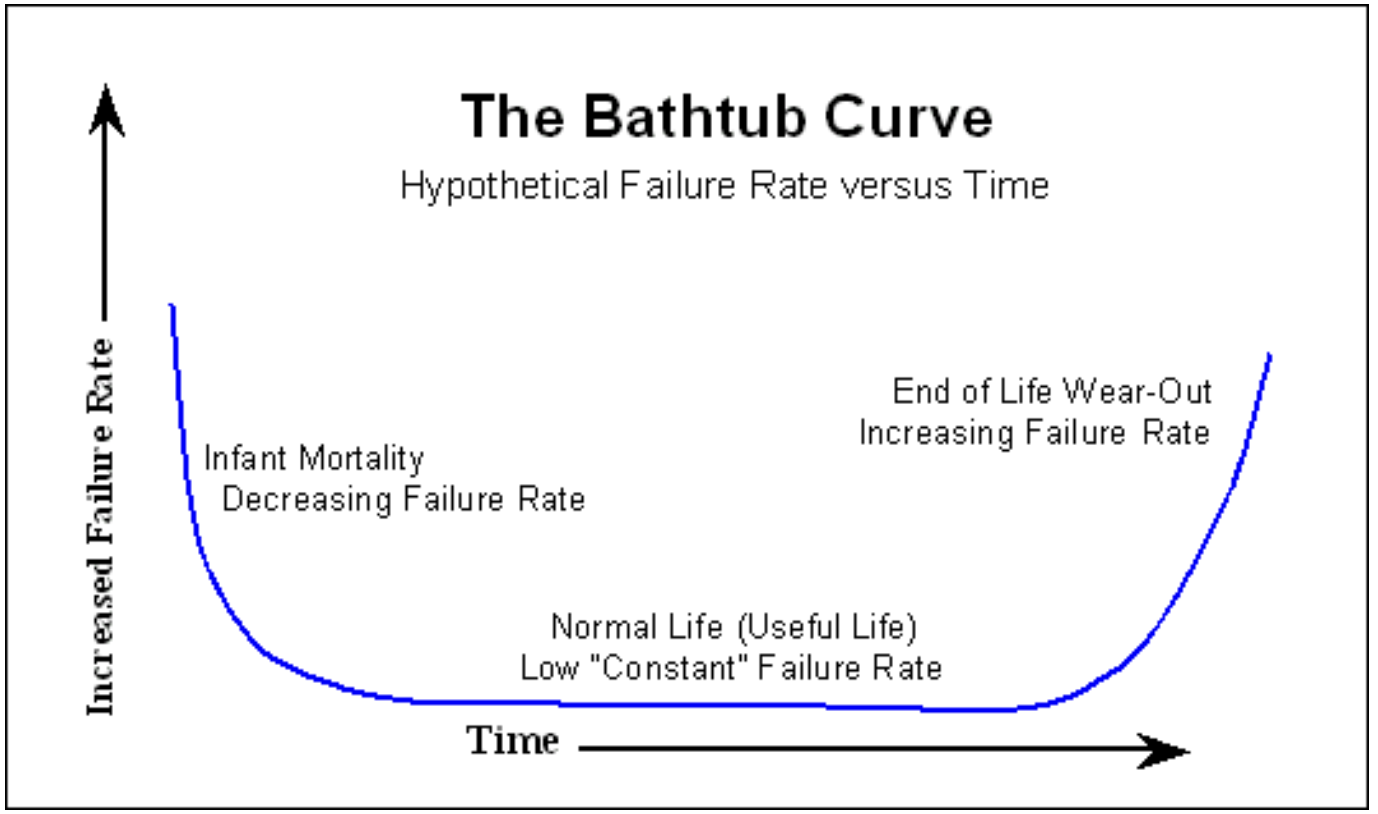Another weekend in the plant due to an unexpected breakdown? Unlike other professions, engineers in process industries are used to last minute calls asking to fix (or at least attempt to fix) unexpected equipment malfunctions. It may not be easy to explain why an issue can’t wait, but you and the plant management understand the potential economic, safety and sustainability implications that can come with any breakdown.
Besides ruining your weekend plans, the biggest frustration will likely come when you realize the issue has happened before. Whether it was a year ago, five years ago or even more, chances are the incident was analyzed to identify the root cause of the breakdown, prompting changes in maintenance plans, additional monitoring and possibly even improvements in equipment design. In the long run, though, it’s likely the situation will repeat in a similar way.
The classic reliability bathtub diagram clearly illustrates why. All equipment has an intrinsic failure rate and, while the chances of failure might be higher or lower, it never reaches zero. The bottom line is that equipment will fail no matter what. The question then becomes when and how?
 |
|
Image Source: Pumps & Systems
|
In recent years, our ability to monitor processes and machinery has exploded, along with our ability to store the vast amounts of data collected. Despite having access to that huge amount of information, accurate and timely detections are still challenging. In a way, the problem today is not about how to get the information, but how to digest it.
To use a simple example – could you recall your car’s mileage from three months ago? If you could, could you then tell if the car’s gas mileage has decreased over the years? The fact is you always have this information right in front of you, but as humans, we focus on the most relevant information and discard everything else. We can act on more urgent measurements – like when your car is at risk of running out of gas - but remembering the mileage in the long term is unlikely.
The same is true for control room operators, process and maintenance engineers. While the smartest engineers might know critical process parameters and values from memory, the high level of complexity of the process systems means only the more relevant variables are properly tracked. That ability - to recognize and prioritize the most important values and patterns when they change - is among the main differences between young engineers and more experienced senior staff. Even the most experienced engineers, however, can’t remember or identify all possible combinations they might face.
Using Asset Performance Management (APM) systems, companies can capture the knowledge of those senior engineers and allow all employees to tap that resource. Often, the first approach is to use a condition-based monitoring tool and equipment key performance indicators to establish a set of thresholds in critical measurements and calculations – such as high-bearing temperature, low efficiency, low heat transfer and more - to indicate when equipment may need attention. While this approach is relatively easy to implement and straightforward to follow, it can be difficult to maintain over the long term, because any change in operating conditions requires operators to redefine the calculations and thresholds. Even common changes like weather conditions or flow rate conditions may prompt changes.
Through the use of AI and machine learning APM systems can identify more complex failure patterns along with the main relationships affecting the equipment. Machine learning helps reduce complexity in multidimensional problems by summarizing everything in a single variable. Imagine having your best engineer with photographic memory watching your plant, 24 hours a day, seven days a week, with no rest. That is what machine learning-based systems aim for. As good as they are, however, detection systems still require some human engineering supervision to properly provide the context into the machine learning platforms.
While there has been significant recent progress in digitalization for process industries, when it comes to data labeling, classification and recognition, the industry has barely begun. In the future, process systems will not only identify failures, but will be aware of other operating conditions, like startups and shutdowns, and will eventually be able to provide recommendations for how to achieve operational excellence. APM systems will evolve to a process knowledge platform. This is a journey that we are just beginning.
.png?h=250&w=975&la=en&hash=861B3DE828912AA20EF8FC6598D8D45B)

.png?h=415&w=675&la=en&hash=BD4CE54056E70C07181C697E1989B534)
.png?h=415&w=675&la=en&hash=0904CB353788580C78F0B6A86FD6E388)

Leave A Comment